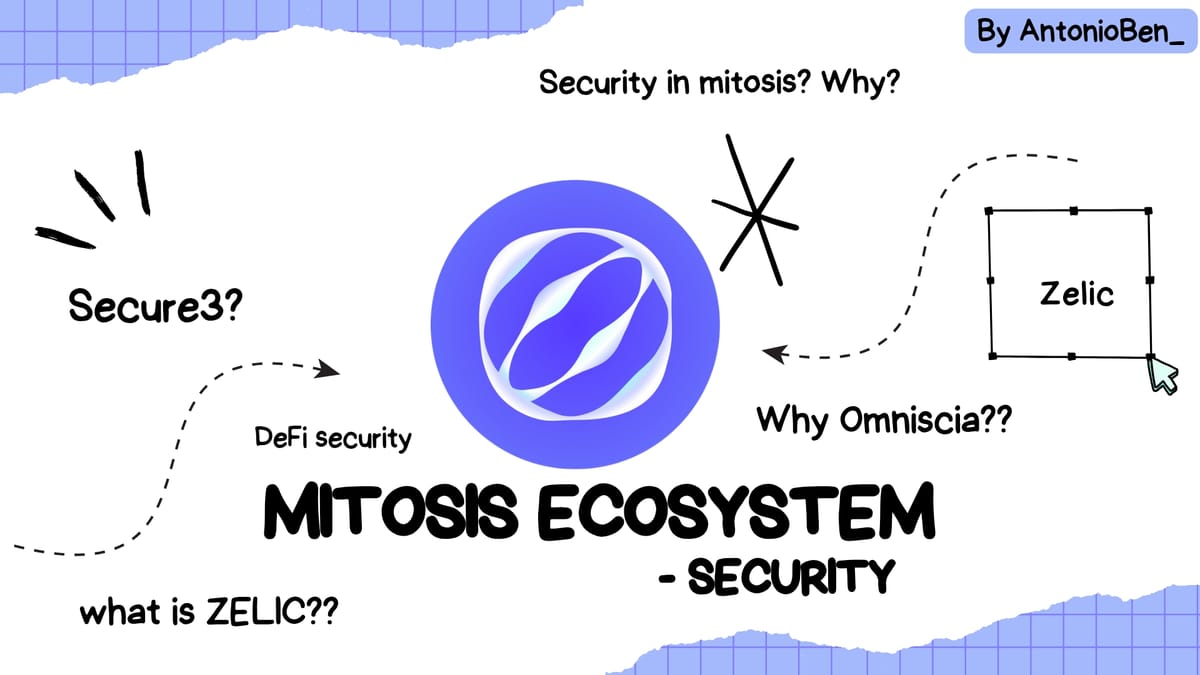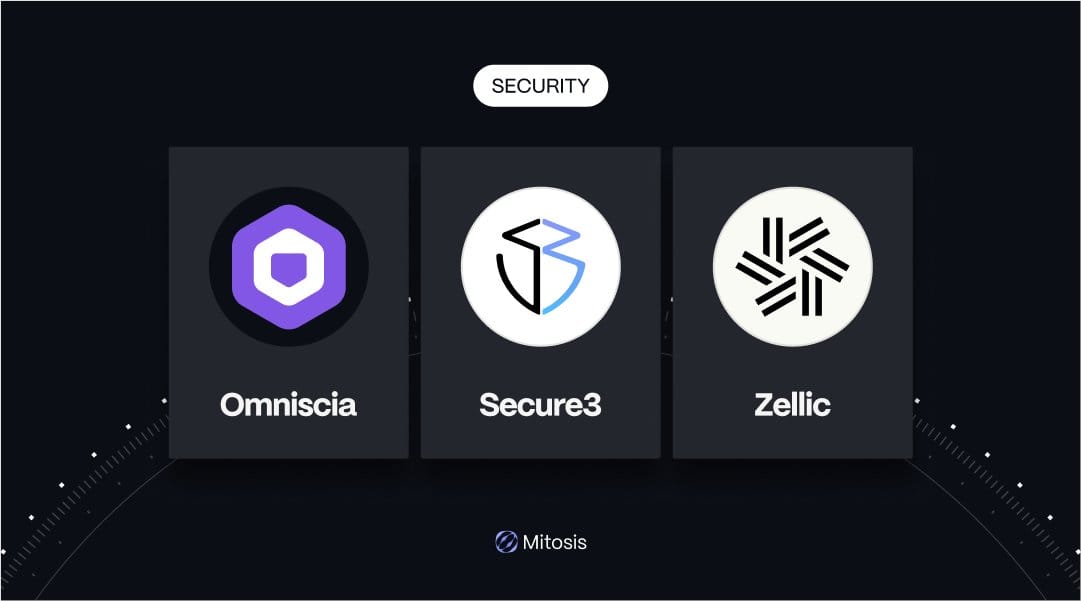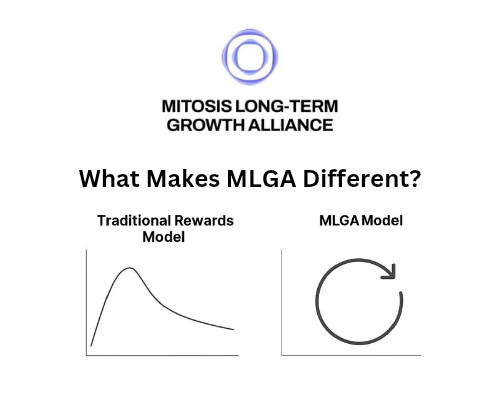MITOSIS ECOSYSTEM PART 4 - security

How Omniscia, Secure3, and Zelic Keep Mitosis Users Safe
In the rapidly evolving world of DeFi, security is everything. No matter how innovative a protocol is, it can crumble without the right protection. That’s why Mitosis doesn’t just build with speed and flexibility but builds with safety at its core.
In this article, we will explore how Mitosis secures its ecosystem through three critical partners:
Omniscia: Code audit and protocol verification
Secure3: Real-time bug bounties and security contests
Zelic: Frontend and user-facing security tools

These teams work behind the scenes to ensure every vault, yield campaign, and liquidity transaction is built on trust.
Omniscia – Smart Contract Audits & Protocol Defense
Omniscia is one of the leading audit firms in the DeFi world, trusted by major protocols across Ethereum, Cosmos, and many more. Mitosis partnered with Omniscia to audit its:
- Matrix Vaults (the programmable yield engine)
- Token Trinity (MITO, gMITO, lMITO)
- Cross-chain messaging integrations (Hyperlane modules)
What makes Omniscia stand out:
Manual line-by-line reviews of complex smart contracts
Attack simulations and exploit testing
Clear reports with mitigation recommendations
By using Omniscia, Mitosis ensures that the building blocks of the protocol are secure, optimized, and resistant to known vulnerabilities.
Secure3 – Decentralized Security via Bug Bounties
Secure3 introduces a new model for Web3 security: community-based auditing.
Rather than relying solely on one-time audits, Secure3 hosts ongoing bug bounty contests, globally certified auditord and security researchers to:
- Test live Mitosis deployments
- Submit real-time vulnerabilities
- Earn rewards for their discoveries
This continuous model creates an active, incentivized layer of defense, keeping Mitosis protected even as it evolves and scales.
Zelic – Protecting the Frontend Experience
Most users interact with DeFi through a web interface, not directly on-chain. That’s why Mitosis works with Zelic, a frontend security platform that prevents:
- Phishing attempts and spoofed URLs
- Frontend hijacking or malicious UI injections
- Transaction tampering at the browser level
Zelic actively scans and monitors Mitosis frontends for abnormal activity, warning users and protecting them at the point of interaction.
This is critical for onboarding new users especially in vault campaigns, where fast action is needed and trust in the UI must be absolute.
How These Security Ecosystem Helps Mitosis
The combination of Omniscia (backend), Secure3 (real-time defense), and Zelic (frontend protection) gives Mitosis full-stack security coverage. It’s a model designed to:
- Prevent exploits before they happen
- Detect new vulnerabilities as the protocol grows
- Protect users from both code-level and interface-level risks
By embracing a layered and proactive security model, Mitosis is setting a new standard for DeFi protocols.
This isn’t just about audits, it’s about earning trust through transparency, openness, and resilience so no malfunction can occur.
CONCLUSION
Security is part of MITOSIS DNA.
While vaults, maAssets n miAssests, and yield campaigns get the spotlight, it’s the silent work of Omniscia, Secure3, and Zelic that makes everything possible.

As Mitosis heads toward mainnet, these partnerships ensure that the protocol isn’t just powerful, it’s safe, resilient, and built to last.
MITOSIS IS THE WAY TO GO

Comments ()